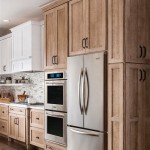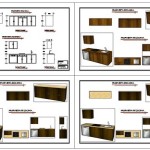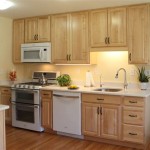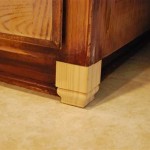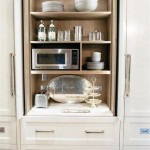Standard Width of Kitchen Cabinets: A Comprehensive Guide
When designing a new kitchen or remodeling an existing one, determining the standard width of kitchen cabinets is crucial for ensuring proper functionality and aesthetic appeal. Kitchen cabinets come in various widths to accommodate different storage needs and spaces. Understanding the standard sizes will help you plan the layout effectively and avoid costly mistakes.
Base Cabinets
Base cabinets are the foundation of any kitchen and provide ample storage for cookware, appliances, and other essential items. The standard width of base cabinets falls into three main categories:
- 12 inches: Narrowest option, suitable for small spaces, spice racks, or pull-out drawers.
- 15 inches: Common size for under-sink cabinets, providing space for plumbing fixtures.
- 18 inches: Most versatile width, ideal for storing pots, pans, and other large items.
Base cabinets can also be extended to 24 and 30 inches in width for maximum storage capacity. Drawer base cabinets are typically 12 inches wide.
Wall Cabinets
Wall cabinets hang above base cabinets and offer additional storage for dishes, glasses, and lighter items. The standard widths of wall cabinets are:
- 12 inches: Suitable for narrow spaces, such as above the refrigerator or stove.
- 15 inches: A versatile size that accommodates standard dinnerware and glassware.
- 18 inches: Provides ample storage for larger glasses, bowls, and serving platters.
Wall cabinets can also be extended to 24 and 30 inches in width for increased storage capacity.
Tall Cabinets
Tall cabinets are vertical units that provide additional storage and can be used for pantry items, appliances, or brooms and mops. The standard widths of tall cabinets are:
- 12 inches: Ideal for narrow spaces, such as between base cabinets or as a pantry unit.
- 15 inches: Common width for pantry cabinets, providing ample space for canned goods and packaged items.
- 18 inches: Accommodates larger appliances, such as microwaves or ovens, and can also be used as a pantry unit.
Tall cabinets can be extended to 24 and 30 inches in width for maximum storage capacity.
Corner Cabinets
Corner cabinets are designed to maximize storage space in corners. They come in various shapes and sizes, including:
- Lazy Susan: Carousel-style cabinet with shelves that rotate for easy access.
- Blind Corner: Cabinet with a door that opens to reveal shelves or drawers that can be difficult to access.
Corner cabinets typically measure between 12 and 24 inches in width.
Factors to Consider
When choosing the width of kitchen cabinets, consider the following factors:
- Storage needs: Determine the amount of storage space required for your kitchen essentials.
- Kitchen layout: Consider the available space and the flow of traffic in the kitchen.
- Appliances: Account for the size of appliances that will be housed in the cabinets.
- Personal preferences: Choose widths that suit your specific storage preferences and habits.
Conclusion
Understanding the standard width of kitchen cabinets is essential for creating a functional and aesthetically pleasing kitchen. By considering the different sizes available and factors that influence your storage needs, you can select cabinet widths that maximize space, improve accessibility, and enhance the overall design of your kitchen.

N Standard Kitchen Dimensions Renomart

Measure Your Kitchen Cabinets Before Designing The Layout Cabinet Dimensions Height Measurements

N Standard Kitchen Dimensions Renomart
Guide To Kitchen Cabinet Sizes And Dimensions

Woodcraft Custom Kitchen Cabinet Measurements

Wall Cabinet Size Chart Builders Surplus

Kitchen Wall Cabinet Size Chart Builders Surplus Cabinets Dimensions Sizes

Kitchen Cabinet Sizes What Are Standard Dimensions Of Cabinets

Helpful Kitchen Cabinet Dimensions Standard For Daily Use Engineering Feed

Helpful Kitchen Cabinet Dimensions Standard For Daily Use Engineering Feed
Related Posts


